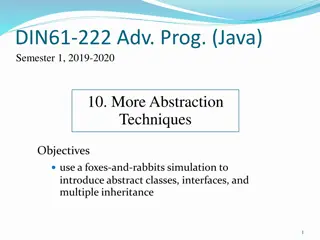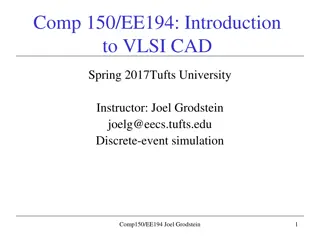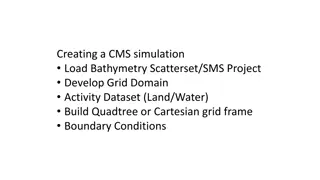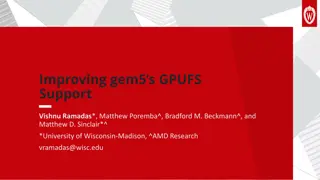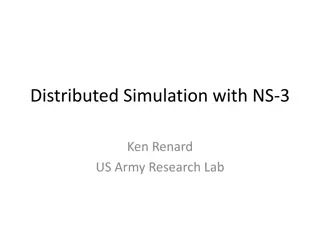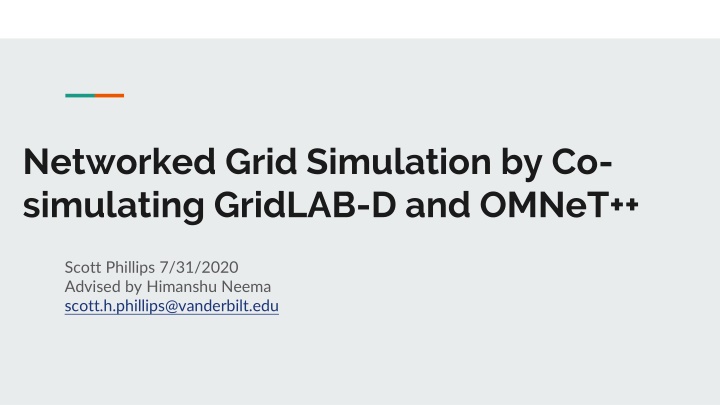
Networked Grid Simulation Co-simulating GridLAB-D and OMNeT++
Explore the implementation and benefits of co-simulating GridLAB-D and OMNeT++ for networked grid simulations. Learn how to enable data exchange, create buffers, and manage communication between the two simulation tools to model network attacks effectively.
Download Presentation

Please find below an Image/Link to download the presentation.
The content on the website is provided AS IS for your information and personal use only. It may not be sold, licensed, or shared on other websites without obtaining consent from the author. If you encounter any issues during the download, it is possible that the publisher has removed the file from their server.
You are allowed to download the files provided on this website for personal or commercial use, subject to the condition that they are used lawfully. All files are the property of their respective owners.
The content on the website is provided AS IS for your information and personal use only. It may not be sold, licensed, or shared on other websites without obtaining consent from the author.
E N D
Presentation Transcript
Networked Grid Simulation by Co- simulating GridLAB-D and OMNeT++ Scott Phillips 7/31/2020 Advised by Himanshu Neema scott.h.phillips@vanderbilt.edu
GridLAB-D and OMNeT++ GridLAB-D is a power distribution system simulation and analysis tool developed by the US Department of Energy (DOE) and PNNL GridLAB-D functions as a core simulator that interacts with various modules These modules contain implementations for objects that are relevant for distribution system simulations (e.g. Market, Powerflow) OMNeT++ is a simulation library and framework used for building communication network simulators
Motivation for Co-simulating GridLAB-D with OMNeT++ GridLAB-D has instant communication between entities that would communicate over a network in the real world Using a network simulator would allow us to model network attacks
Implementing Co-simulation Enable data exchange between GridLAB-D and OMNeT++ Create buffers in GridLAB-D for messages to be stored in GLDInBuf, GLDOutBuf The order of messages is preserved in both directions Prevent GridLAB-D from internally delivering data that is sent over network










